What is Continous Deployment in Jenkins?
Overview
Jenkins, a popular automation server, facilitates this by streamlining the entire process from source code integration to deployment, minimising manual intervention. It ensures that every successful code change is swiftly and reliably deployed to production, thereby accelerating software delivery, reducing human error, and enabling rapid iteration. This approach promotes agility and responsiveness, allowing development teams to swiftly deliver new features and enhancements to users while maintaining a high level of reliability. If you're wondering what is continuous deployment in Jenkins, it's a crucial part of modern software development that automates the deployment process for faster and more efficient releases.
Continuous Deployment vs. Continuous Delivery
Continuous Deployment and Continuous Delivery are both software development practices that focus on automating and streamlining the process of delivering code changes to production environments. However, there is a key difference between the two:
Continuous Delivery (CD): Continuous Delivery is the practice of automatically deploying code changes to staging or pre-production environments after they have passed automated tests and quality checks. In this approach, the code changes are ready to be deployed to production at any time, but the actual deployment to production is a manual decision. Continuous Delivery ensures that the software is always in a deployable state, allowing for rapid and reliable releases.
Continuous Deployment (CD): Continuous Deployment takes the concept of Continuous Delivery one step further. In Continuous Deployment, every code change that passes automated tests and quality checks is automatically and immediately deployed to production without manual intervention. This means that any successful code change is released to end-users without delay, as the deployment process is fully automated and triggered as soon as the tests are passed.
Implementing Continuous Deployment in Jenkins
Implementing Continuous Deployment in Jenkins involves setting up a workflow that automates the process of deploying code changes to production as soon as they pass automated tests and quality checks. Here's a high-level overview of the steps involved in setting up Continuous Deployment in Jenkins:
- Version Control System (VCS) Integration: Integrate your version control system (e.g., Git, SVN) with Jenkins. Configure Jenkins to monitor the repository for code changes.
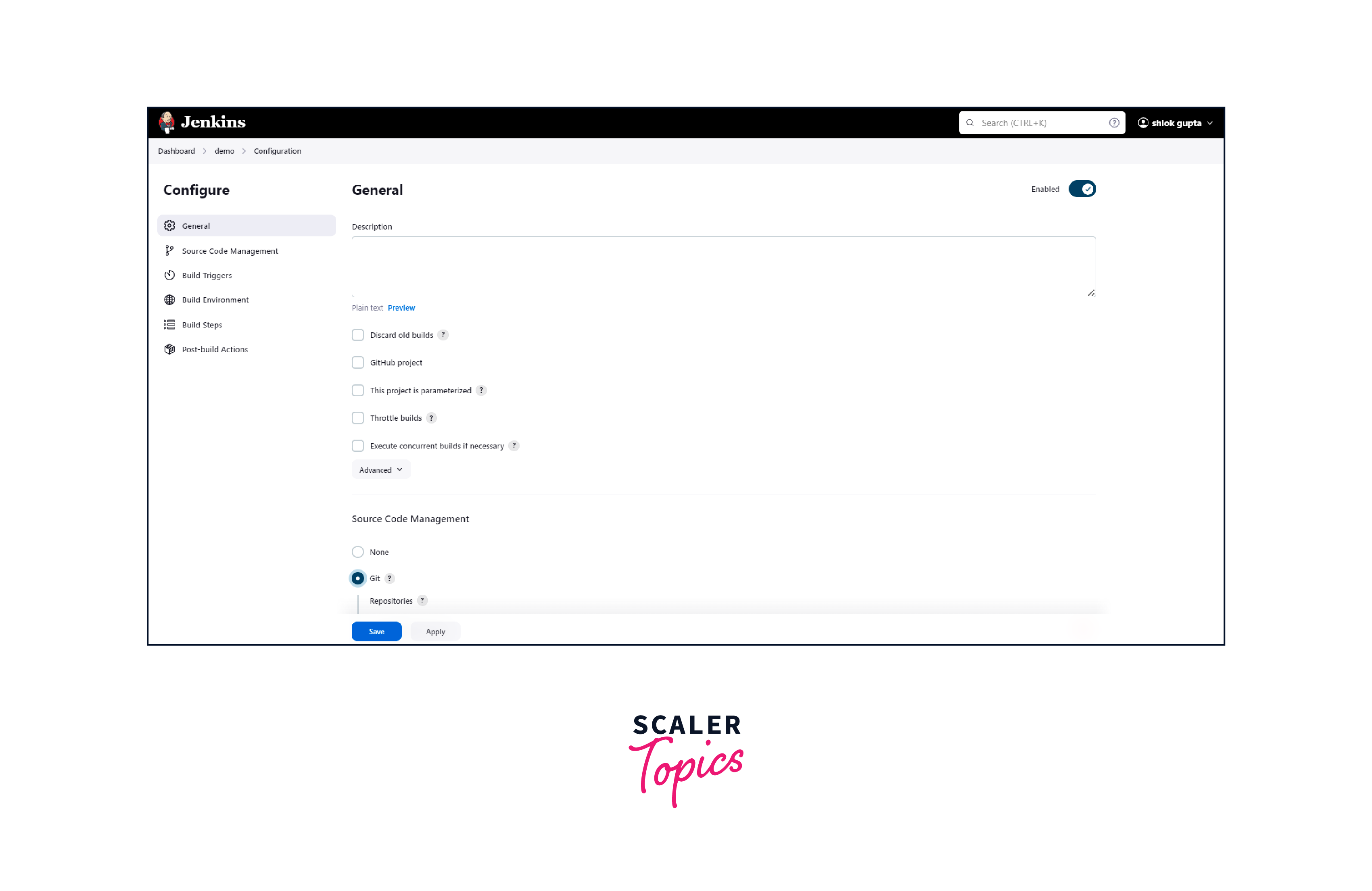
- Automated Build: Set up Jenkins to automatically build your application whenever new code changes are pushed to the repository. Use build tools like Maven, Gradle, or others as needed.

- Automated Testing: Create automated tests (unit tests, integration tests, etc.) for your application. Configure Jenkins to run these tests as part of the build process. Ensure that the tests effectively validate the functionality and quality of your code.
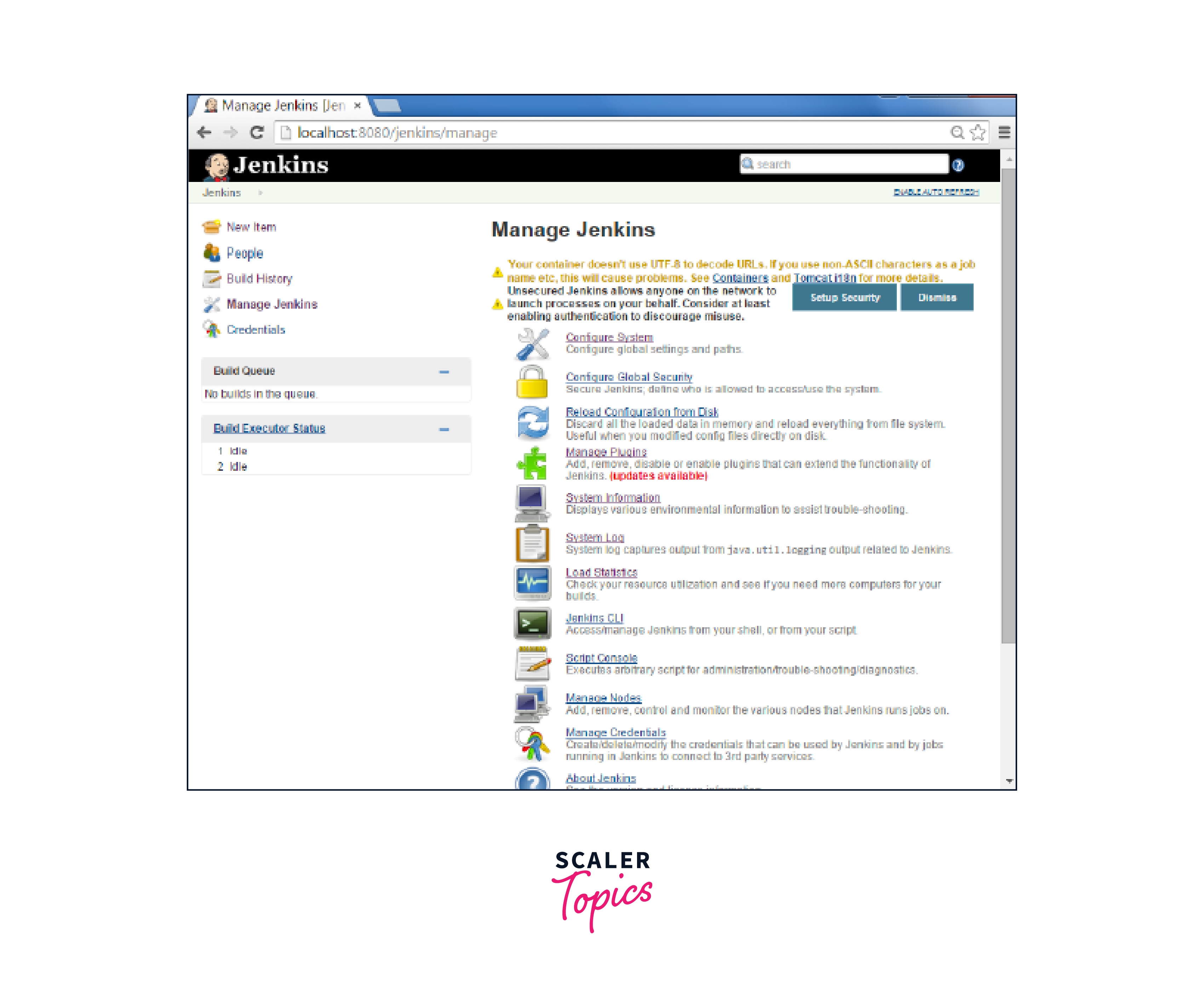
- Artefact Generation: After a successful build and test run, generate deployment artefacts (e.g., compiled code, binaries, configuration files) that are ready for deployment.
- Staging Environment: Create a staging or pre-production environment that closely resembles your production environment. This is where you'll deploy and test your code changes before they go live.
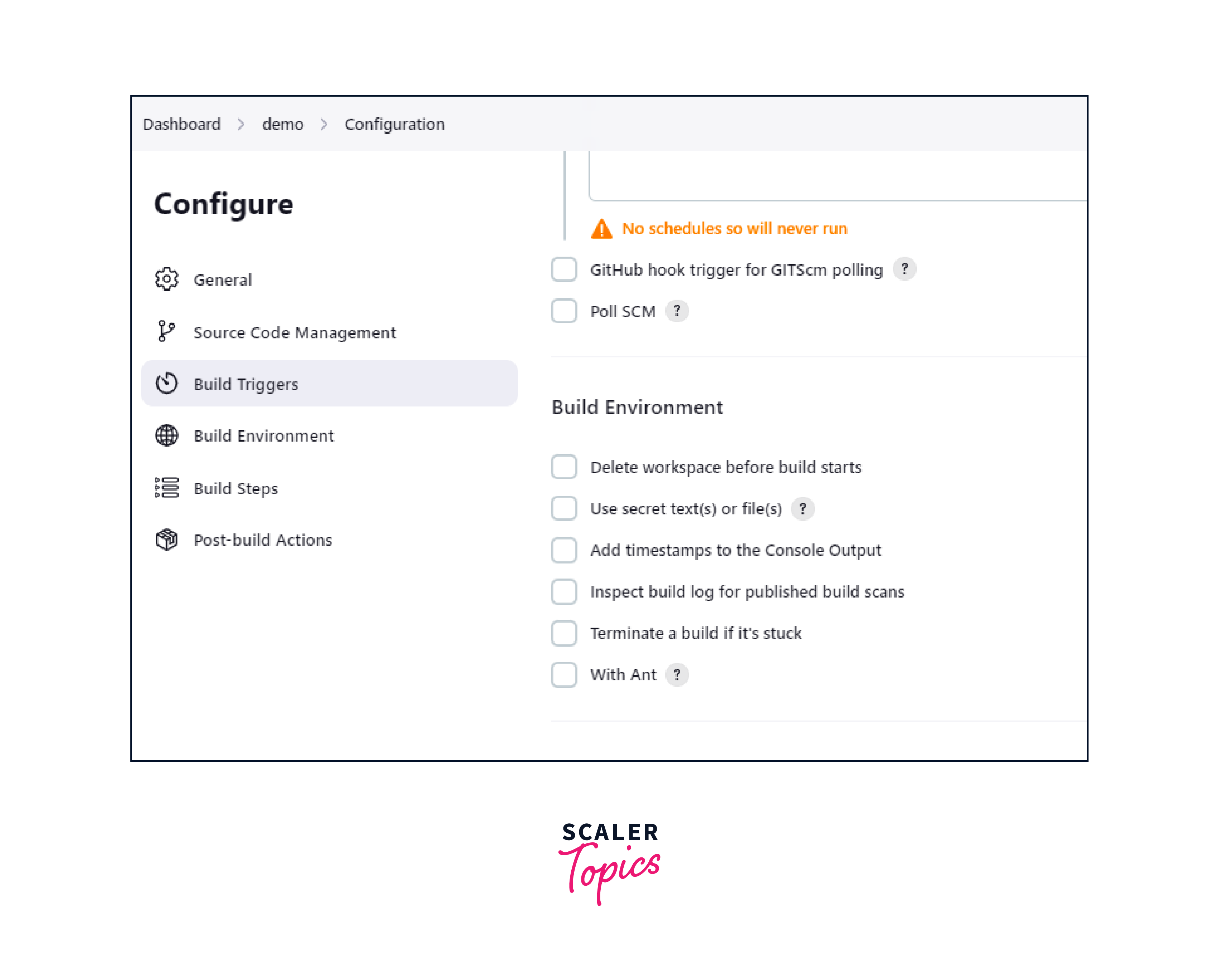
- Production Deployment (Continuous Deployment): For Continuous Deployment, set up the final stage of the pipeline to automatically deploy to the production environment after passing all tests and validation steps. This deployment is triggered without manual intervention.
- Monitoring and Rollback Plan: Implement monitoring and logging solutions to track the performance of your application in production. Have a well-defined rollback plan in case any issues arise after deployment.
- Feedback Loop: Continuously monitor and gather feedback from users and the production environment. Use this feedback to further improve the development, testing, and deployment process.
Deployment Pipeline Setup
Setting up a deployment pipeline involves creating a series of automated stages that code changes go through before being deployed to production. This pipeline ensures that proper testing, validation, and quality checks are performed at each step, leading to a reliable and efficient deployment process. Here's a general outline of how to set up a deployment pipeline:
- Define Pipeline Stages: Identify the stages that your code changes should go through before reaching production. Common stages include Build, Test, Staging, and Production.
- Version Control Integration: Integrate your version control system (e.g., Git) with your pipeline. Trigger the pipeline when new code changes are pushed to specific branches.
- Automated Build: Set up a stage to build your application. Use build tools like Maven, Gradle, or others to compile your code and generate artefacts.
- Automated Testing: Create a stage to run automated tests (unit tests, integration tests, etc.). Ensure that failing tests prevent the pipeline from progressing.
- Static Code Analysis: Consider adding a stage for static code analysis tools to ensure code quality and adherence to coding standards.
- Artefact Generation: After successful testing, generate deployment artefacts that are ready for deployment. These could be compiled binaries or other artefacts specific to your application.
- Staging Environment Deployment: Set up a stage to deploy the artefacts to a staging environment that closely resembles your production environment. Run additional tests, such as smoke tests and acceptance tests, in this environment.
- Production Deployment (Continuous Deployment): In a Continuous Deployment setup, set up the final stage to automatically deploy the tested and approved changes to the production environment.
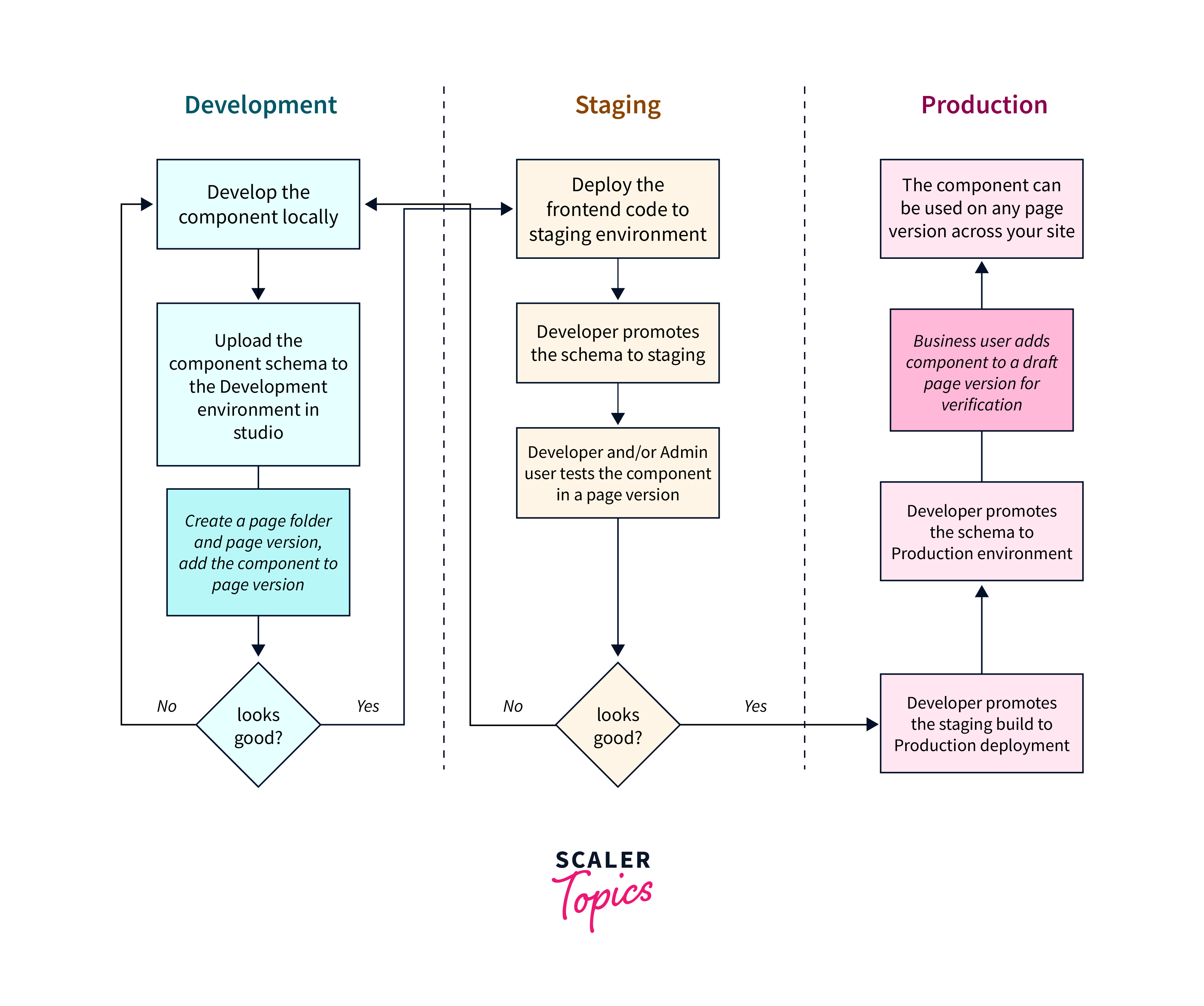
Integration with Version Control
Integrating your deployment pipeline with a version control system (VCS) is a crucial step in achieving continuous integration and automated deployment. This integration ensures that code changes trigger the pipeline, leading to automated build, testing, and deployment processes. Here's how to integrate your deployment pipeline with a VCS like Git:
- Choose a VCS Hosting Platform: Select a VCS hosting platform that suits your needs, such as GitHub, GitLab, Bitbucket, or others.
- Create a Repository: Set up a repository on the chosen platform for your project. This is where you'll store your codebase and track changes.
- Branching Strategy: Establish a branching strategy that defines how different branches are used, such as main/develop branch for ongoing development and feature/bugfix branches for specific tasks.
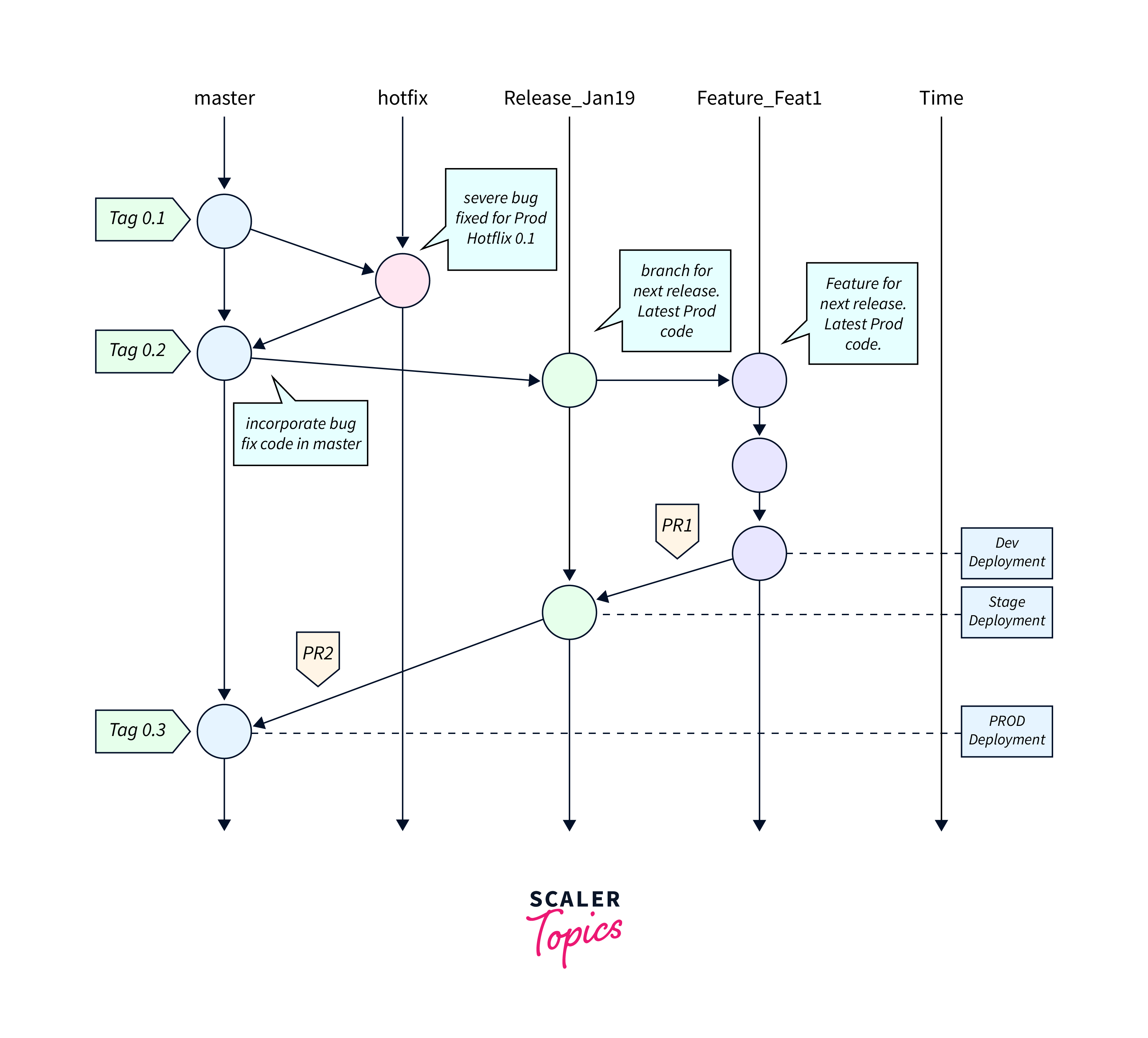
- Webhooks or Integration Tokens: Use webhooks (platform-dependent) or integration tokens to establish a connection between your VCS and the deployment pipeline. This connection ensures that events in the repository trigger actions in the pipeline.
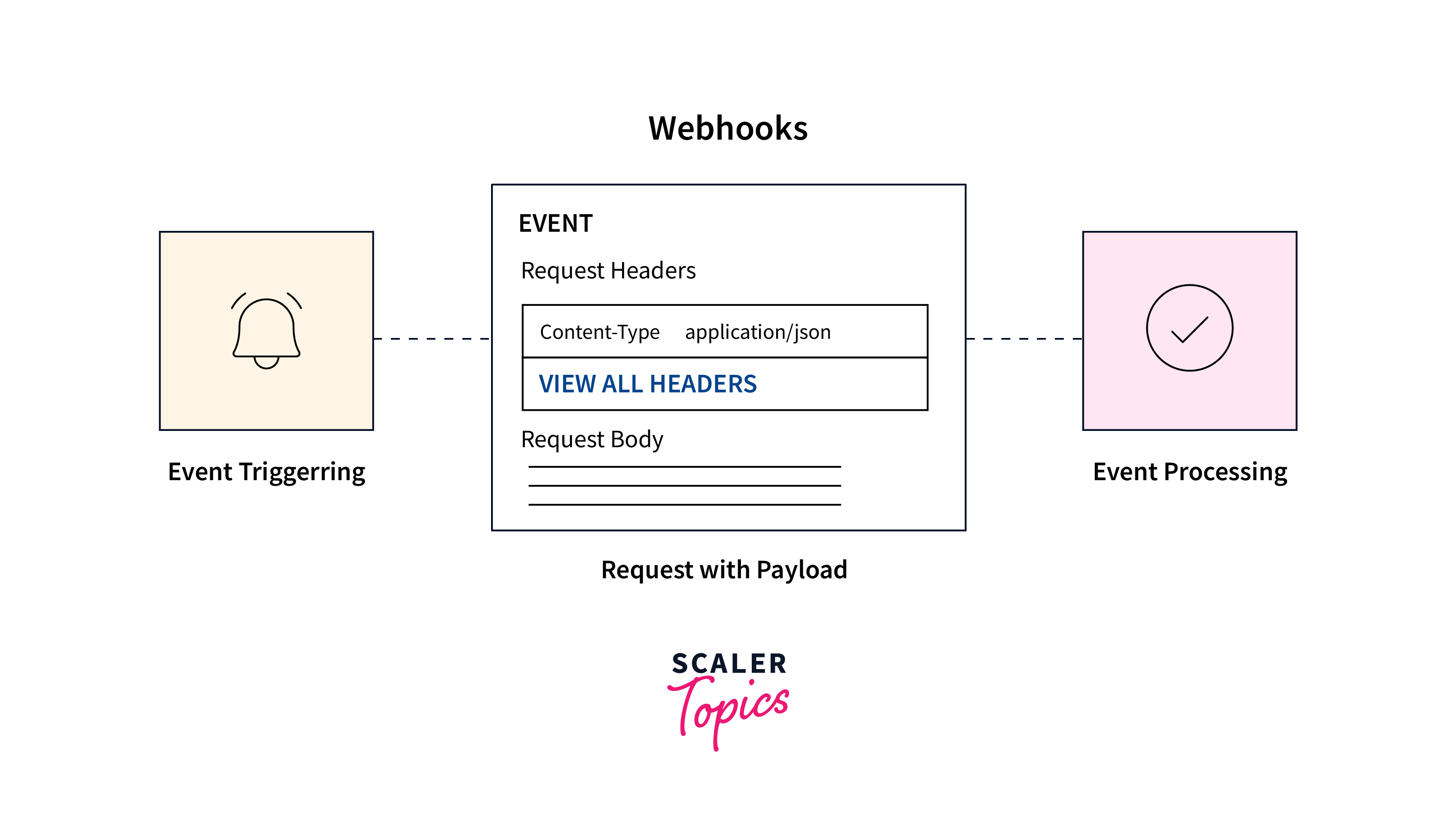
- Trigger Events: Configure your VCS to trigger events when code changes occur, such as pushes to specific branches or pull requests. Common events include push events, pull request events, and tag events.
- Pipeline Configuration: In your deployment pipeline tool (e.g., Jenkins), set up a new pipeline job that listens for VCS events. You'll need to specify which events should trigger the pipeline execution.
- Automation Scripts: Within your pipeline job, define the sequence of stages, including build, testing, deployment, etc. These stages are executed automatically when triggered by a VCS event.
- Testing and Validation: Ensure that the pipeline runs automated tests and validation steps after a code change event is triggered. Any failures should halt the pipeline and notify the team.
Automated Testing for Deployment Confidence
Automated testing is a critical component of achieving deployment confidence in your continuous deployment pipeline. By automating various types of tests, you ensure that code changes are thoroughly validated before being deployed to production. Here are the key types of automated tests that contribute to deployment confidence:
- Unit Tests: These tests focus on individual components or units of code, ensuring that each unit functions as expected. Unit tests help catch bugs early and provide a solid foundation for the rest of your testing strategy.
- Integration Tests: Integration tests verify the interactions between different components or services within your application. They ensure that the integrated parts work seamlessly together and help identify integration-related issues.
- Functional Tests: Functional tests validate that the software meets the specified requirements and functions correctly from a user's perspective. These tests cover user interactions and use cases.
- Regression Tests: Regression tests are executed to verify that new code changes haven't introduced regressions—unintended side effects or bugs in existing functionality.
- Smoke Tests: Smoke tests are quick, high-level tests that verify essential functionality after a deployment. They help catch critical issues early in the deployment process.
- Usability Tests (UI Tests): Usability tests focus on the user interface to ensure it's intuitive, user-friendly, and functions as expected. These tests help catch UI-related issues.
- Cross-Browser and Cross-Device Tests: If your application is accessed through various browsers and devices, these tests ensure that it functions correctly across different environments.
To incorporate automated testing into your deployment pipeline:
- Choose Testing Frameworks: Select appropriate testing frameworks and tools based on your application's technology stack and testing needs.
- Integrate Tests in the Pipeline: Define stages in your pipeline for each type of test. Trigger these stages after the build and before deployment.
- Automate Test Execution: Write automated test scripts that cover various testing scenarios. Automate the execution of these tests within the pipeline.
- Test Parallelization: Whenever possible, parallelize test execution to speed up the pipeline while maintaining test coverage.
- Continuous Monitoring: Continuously monitor test results and performance metrics to identify trends and potential issues.
- Test Reporting: Generate clear and comprehensive test reports to provide visibility into the state of the application at each stage of the pipeline.
Managing Environment-Specific Configurations
Managing environment-specific configurations is crucial for ensuring that your application functions correctly and securely across different environments, such as development, testing, staging, and production. Here are some best practices for managing environment-specific configurations effectively:
- Use Configuration Files: Store configuration settings in separate configuration files for each environment. This could be JSON, YAML, XML, or properties files, depending on your application's technology stack.
- Environment Variables: Use environment variables to inject configuration values at runtime. Most cloud platforms and hosting services support environment variables for application configurations.
- Configuration Management Tools: Utilise configuration management tools like Ansible, Puppet, or Chef to automate the deployment and configuration of applications in various environments.
- Secret Management: Store sensitive information (e.g., API keys, passwords) in secure secret management systems like HashiCorp Vault or AWS Secrets Manager. Only expose these secrets to the necessary environments.
- Dynamic Configuration Services: Use dynamic configuration services like Spring Cloud Config or HashiCorp Consul to centralise and manage configurations dynamically across different environments.
- Environment Overrides: Allow certain configuration values to be overridden in specific environments. This helps avoid duplicating configuration files while maintaining flexibility.
Monitoring and Post-Deployment Verification
Monitoring and post-deployment verification are essential practices to ensure the health, performance, and reliability of your application after changes have been deployed. These practices help detect and address issues early, providing confidence that your deployment was successful. Here's how to approach monitoring and verification:
Monitoring:
- Application Performance Monitoring (APM): Implement APM tools to monitor key performance metrics like response times, latency, error rates, and resource utilisation. These tools help identify performance bottlenecks and degradation.
- Logging and Error Tracking: Set up comprehensive logging and error tracking to capture application events, exceptions, and errors. This aids in diagnosing issues quickly.
- Infrastructure Monitoring: Monitor the underlying infrastructure, including servers, databases, network components, and cloud services. This ensures the infrastructure is stable and responsive.
- User Experience Monitoring: Monitor user interactions and experiences through tools that capture user journeys, user flows, and user behaviour. This helps identify issues from the user's perspective.
- Alerting and Notifications: Configure alerts and notifications to promptly inform the relevant teams about anomalies, errors, or performance degradation.
Post-Deployment Verification:
- Smoke Tests: Run smoke tests immediately after deployment to ensure the basic functionality of the application is working as expected.
- Functional Verification: Perform functional tests to validate that specific features and use cases function correctly.
- End-to-End Tests: Execute end-to-end tests to validate the flow of user interactions across various components.
- Canary Verification: If you've used canary deployments, verify that the changes are performing well within the canary group before a wider rollout.
- Performance Verification: Validate that the application's performance meets the expected criteria, as monitored by your APM tools.
- User Acceptance Testing (UAT): If applicable, involve users or stakeholders in UAT to validate that the changes meet business requirements.
Security Considerations for Continuous Deployment
Security is a paramount concern in continuous deployment practices. While continuous deployment offers benefits in terms of speed and agility, it's essential to ensure that security considerations are integrated into every step of the process. Here are key security considerations to keep in mind:
- Automated Security Testing: Implement automated security testing, including static application security testing (SAST) and dynamic application security testing (DAST), to identify vulnerabilities in code and applications.
- Dependency Scanning: Regularly scan dependencies (libraries, frameworks, modules) for known vulnerabilities and keep them updated.
- Secret Management: Use secure secret management tools to store sensitive information like API keys, passwords, and tokens. Avoid hardcoding secrets in code or configuration files.
- Access Control and Least Privilege: Implement least privilege principles, ensuring that only authorised individuals or processes have access to resources and data.
- Authentication and Authorization: Implement strong authentication mechanisms and role-based access controls to restrict access to sensitive areas of your application and infrastructure.
- Secure Code Guidelines: Follow secure coding guidelines to prevent common vulnerabilities such as injection attacks, cross-site scripting (XSS), and security misconfigurations.
- Penetration Testing: Conduct regular penetration testing to simulate real-world attacks and identify vulnerabilities that automated tools might miss.
- Security Training: Train developers and teams on secure coding practices and the importance of security in the deployment process.
Continuous Deployment Best Practices
Continuous deployment (CD) can significantly enhance software development and delivery processes, but successful implementation requires adherence to best practices to ensure reliability, stability, and efficiency. Here are some key best practices for continuous deployment:
- Automated Testing: Implement comprehensive automated testing for various levels, including unit, integration, regression, performance, and security tests. Automated tests provide confidence that code changes won't break existing functionality.
- Microservices Architecture: Consider using a microservices architecture, which allows for independent deployment of smaller, isolated components, enabling faster releases and reducing the impact of changes.
- Feature Flags/Toggles: Use feature flags to enable or disable specific features dynamically, allowing you to control feature releases and rollbacks.
- Automated Deployment: Automate the deployment process to minimise manual interventions, human error, and deployment-related risks.
- Canary Deployments: Gradually release changes to a subset of users before full deployment to identify issues early and minimise impact.
- Security Automation: Integrate automated security testing and vulnerability scans into your CI/CD pipeline to catch security issues early.
Conclusion
- Automated Process: Continuous Deployment automates the entire deployment process, from source code integration to production deployment, reducing the need for manual intervention.
- Code Quality: Code changes undergo automated testing and validation, ensuring that only high-quality and functional code is deployed to production.
- Jenkins Integration: Jenkins, a popular automation server, plays a central role in implementing Continuous Deployment by orchestrating the build, test, and deployment steps.
- Staged Environments: Continuous Deployment often involves deploying code changes to staging environments first, allowing for additional testing and validation before moving to production.
- Immediate Deployment: Once code changes pass automated tests, they are automatically and immediately deployed to production, ensuring swift delivery of new features and improvements.
- Deployment Confidence: Automated testing, staging environments, and quality checks provide confidence that code changes are safe to deploy, reducing the risk of introducing issues to users.
- Rapid Iteration: Continuous Deployment enables development teams to iterate quickly, respond to user feedback, and deliver updates frequently.
- Risk Mitigation: Rollback plans and gradual deployment strategies like canary deployments help mitigate risks associated with new releases.
- Collaboration: Continuous Deployment fosters collaboration between development, testing, and operations teams, promoting a DevOps culture.
- Feedback Loop: Continuous monitoring and real-time feedback help identify and address issues promptly, enhancing the overall software quality.
- Adaptability: Continuous Deployment in Jenkins can be customised and adapted to suit the specific needs and technologies of a project.
